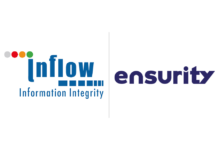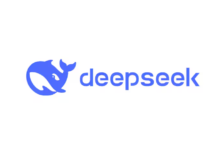This exclusive article series has been conducted by The Mainstream editorial team in collaboration with Mr. Sandiip Bansal, Chief Technology Officer at Coachsbansal.com
A Strategic Approach to AI Implementation
Artificial intelligence (AI) has moved from being a futuristic concept to a business imperative. Organizations across industries are recognizing the transformative potential of AI, yet many struggle with where to begin and how to ensure successful implementation. This comprehensive guide will walk you through creating a structured AI roadmap that aligns with your organization’s goals and capabilities.
Understanding the Foundation: Assessment and Planning
The journey toward AI implementation begins with a thorough assessment of your organization’s current state. Think of this phase as taking inventory before embarking on a major expedition. You wouldn’t start climbing Mount Everest without first understanding your equipment, team capabilities, and the challenges ahead.
First, examine your technical infrastructure. This involves more than just listing your current systems; it requires understanding how these systems interact and where AI could potentially enhance their capabilities. For instance, a healthcare organization might discover that while they have extensive patient data, their systems aren’t integrated in a way that would allow AI to derive meaningful insights.
Data availability and quality form the cornerstone of any AI initiative. Consider your data as the fuel that will power your AI engines. Just as a car won’t run efficiently on contaminated fuel, AI systems won’t perform optimally with poor-quality data. Organizations must assess not only what data they have but also its accuracy, completeness, and accessibility.
Identifying skill gaps is equally crucial. Your organization might have brilliant marketers or operations managers, but AI implementation requires specialized expertise in data science, machine learning, and AI engineering. This assessment helps determine whether you need to invest in training existing staff, hire new talent, or partner with external experts.
Building the Foundation: Infrastructure and Team Development
With a clear understanding of your starting point, the next phase focuses on building a robust foundation. This stage is similar to laying the groundwork for a skyscraper – the stronger the foundation, the higher you can build.
Data infrastructure development requires careful consideration of three key elements: collection systems, storage solutions, and processing capabilities. Modern AI applications often require real-time data processing and analysis, necessitating robust data pipelines and scalable storage solutions. Cloud platforms have become increasingly popular for this purpose, offering flexibility and scalability that traditional on-premise solutions might lack.
Team development goes beyond just hiring technical experts. Success in AI implementation requires a balanced team with diverse skills. This includes data scientists who can develop algorithms, engineers who can implement solutions, business analysts who can translate business requirements, and project managers who can coordinate these efforts. Moreover, organizations need to foster a culture of continuous learning, as AI technologies evolve rapidly.
Implementation: From Pilot to Scale
The implementation phase is where theory meets practice. Starting with pilot projects allows organizations to test their assumptions and capabilities in a controlled environment. Think of pilot projects as dress rehearsals before the main performance. They should be chosen carefully – significant enough to demonstrate value but contained enough to manage risk.
When selecting pilot projects, consider initiatives that offer high impact with relatively low risk. For example, a manufacturing company might start with predictive maintenance on a single production line rather than implementing it across the entire factory. This approach allows for learning and adjustment before broader implementation.
Scaling successful pilots requires careful attention to integration with existing systems and processes. This is where many organizations face challenges. Successful scaling isn’t just about technical implementation; it requires change management, user training, and often process redesign. Organizations must establish clear governance frameworks to ensure consistent application of AI solutions across different departments or functions.
Measuring Success and Managing Risks
Success in AI implementation isn’t just about technological achievement; it’s about business value creation. Organizations should establish clear metrics tied to business objectives. These might include efficiency gains, cost reductions, revenue increases, or improved customer satisfaction scores.
Risk management must be an ongoing consideration throughout the AI journey. This includes technical risks (like system failures or data breaches), operational risks (such as process disruptions), and strategic risks (such as competitive responses). Organizations should develop comprehensive risk mitigation strategies and regularly review and update them.
The Path Forward
Building an AI roadmap is not a one-time exercise but an iterative process that evolves with your organization’s needs and capabilities. Success requires a balanced approach that considers technology, people, and processes. Organizations that approach AI implementation with clear objectives, robust planning, and a commitment to continuous learning are best positioned to realize the transformative potential of AI.
Remember, the goal isn’t to implement AI for its own sake but to create sustainable business value. By following a structured roadmap while remaining flexible enough to adapt to changing circumstances, organizations can navigate the complex journey of AI implementation successfully.
As you embark on your AI journey, remember that every organization’s path will be unique. The key is to maintain a clear vision of your objectives while being prepared to adjust your approach based on learnings and changing circumstances. With proper planning, robust execution, and continuous evaluation, your organization can harness the power of AI to drive meaningful business transformation.
Also read: Viksit Workforce for a Viksit Bharat
Do Follow: The Mainstream formerly known as CIO News LinkedIn Account | The Mainstream formerly known as CIO News Facebook | The Mainstream formerly known as CIO News Youtube | The Mainstream formerly known as CIO News Twitter
About us:
The Mainstream formerly known as CIO News is a premier platform dedicated to delivering latest news, updates, and insights from the tech industry. With its strong foundation of intellectual property and thought leadership, the platform is well-positioned to stay ahead of the curve and lead conversations about how technology shapes our world. From its early days as CIO News to its rebranding as The Mainstream on November 28, 2024, it has been expanding its global reach, targeting key markets in the Middle East & Africa, ASEAN, the USA, and the UK. The Mainstream is a vision to put technology at the center of every conversation, inspiring professionals and organizations to embrace the future of tech.






